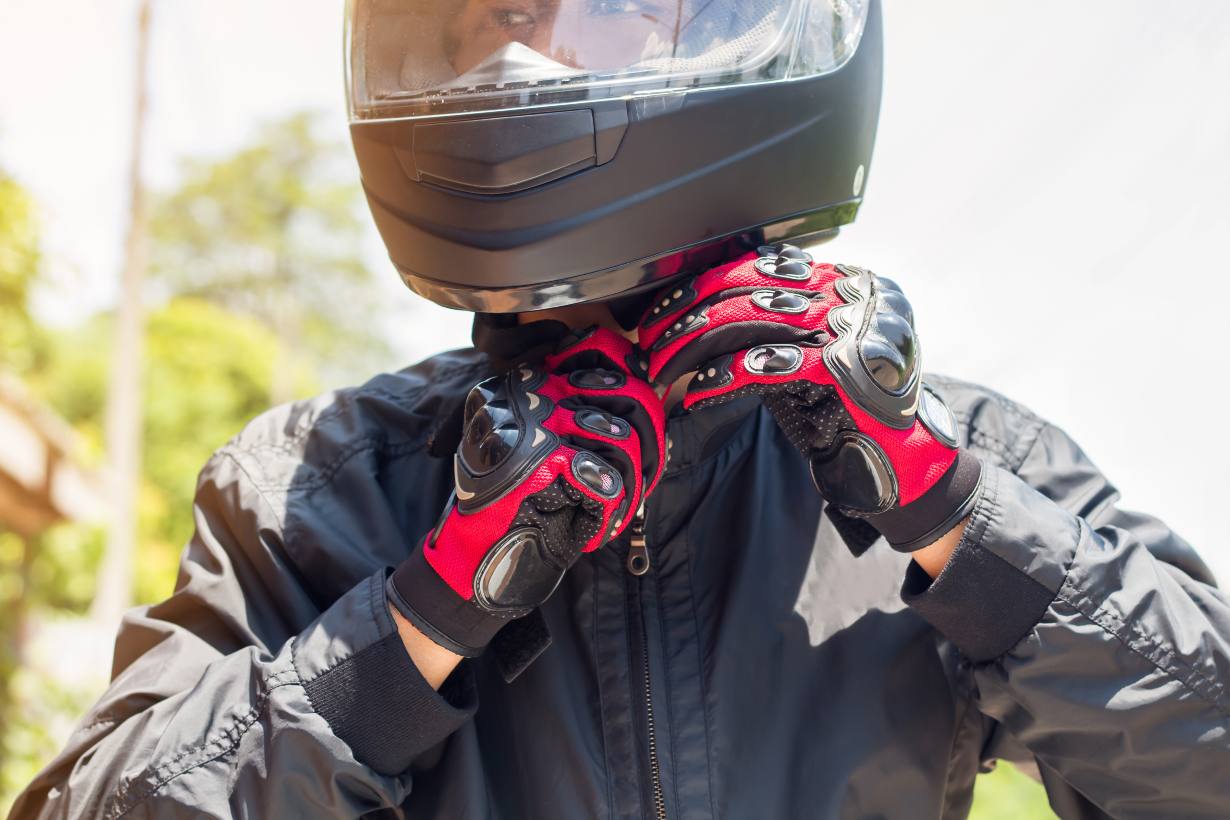Why Helmet Safety Features Matter
Helmets are scientifically engineered to absorb and dissipate the energy from an impact, reducing the force that reaches your head.
Even a minor fall can lead to a serious injury, making it essential to invest in a helmet with reliable safety features.
Beyond basic impact protection, additional features like visibility aids, fit systems, and new impact technologies significantly enhance overall safety.
Key Bicycle Helmet Safety Features to Look For
- Safety Certifications
- CPSC (U.S.): In the United States, the Consumer Product Safety Commission (CPSC) certification is the standard for bicycle helmets, ensuring they meet essential safety requirements for impact resistance and durability.
- EN 1078 (Europe): For European riders, helmets with an EN 1078 certification indicate compliance with European safety standards.
- ASTM: ASTM standards are often applied to helmets used for multiple sports, such as skateboarding and biking, confirming the helmet can provide adequate protection across various activities.
- MIPS (Multi-directional Impact Protection System)
- MIPS is a relatively new safety technology designed to reduce rotational forces on the brain during angled impacts, which can be particularly harmful. MIPS-equipped helmets have a thin, low-friction layer inside that allows the helmet to slide slightly during an impact, helping to redirect some of the rotational force.
- MIPS has quickly become one of the most sought-after features in bicycle helmets, offering an additional layer of protection for both road and mountain biking.
- WaveCel and Other Advanced Materials
- WaveCel Technology: Developed as an alternative to MIPS, WaveCel is a collapsible cellular material that absorbs impact energy, designed to reduce the rotational forces associated with concussions. The material absorbs both direct and rotational impact, offering a high level of protection.
- Koroyd: Koroyd is another material innovation that uses a network of tubular cells to absorb impact forces more efficiently. It’s designed to compress in a controlled manner, dissipating energy on impact to reduce the force transmitted to the rider’s head.
- In-Mold Construction
- Most modern helmets use in-mold construction, where the outer shell is fused to the helmet’s impact-absorbing foam liner. This construction not only enhances strength and durability but also allows for a lighter design, improving both comfort and safety.
- Helmets with in-mold construction are generally more effective at withstanding impact, as they provide a seamless bond between the shell and the liner.
- Extended Coverage
- Certain helmet designs, particularly for mountain biking, feature extended rear and side coverage, offering more protection to the lower back of the head. This is especially important for off-road and trail riders who face a higher risk of falling backward or hitting obstacles from different angles.
- Road helmets can also benefit from extended coverage, as they protect the head in case of falls during high-speed riding.
- Adjustable Fit Systems
- A secure fit is essential for helmet effectiveness. Many helmets come with adjustable fit systems, such as a dial at the back or adjustable straps, which allow the rider to customize the fit for stability and comfort.
- Proper fit prevents the helmet from moving during a crash, ensuring that it remains in the optimal position to protect the head. Look for helmets with an easy-to-use fit system that feels comfortable and stable on your head.
- Ventilation with Safety Integration
- Proper ventilation keeps the rider’s head cool, but well-designed ventilation systems also play a role in safety. Helmets with multiple, strategically placed vents reduce heat buildup while maintaining the helmet’s structural integrity.
- Some helmets use reinforced internal structures to provide additional protection around vent openings, balancing safety with airflow.
- Breakaway Visors
- For mountain biking helmets, breakaway visors are an important safety feature. In the event of a fall, the visor is designed to detach or break off, reducing the chance of the helmet catching on obstacles and causing neck injuries.
- Breakaway visors add convenience by shading the rider from sun and debris while ensuring the helmet won’t cause extra drag or pressure if it comes into contact with an object during a crash.
- Visibility Features
- Reflective Elements: Many helmets now include reflective details or stickers, which enhance visibility in low-light conditions by reflecting headlights from cars, helping other road users see the cyclist from a distance.
- Integrated LED Lights: Some helmets come with built-in LED lights on the back, which can be especially helpful for city and commuter cyclists. These lights increase visibility, making the rider more noticeable to cars and other road users, particularly at night or in low-light conditions.
- Turn Signals and Brake Lights: Advanced helmets may also feature turn signal indicators and brake lights, allowing cyclists to signal their intentions more effectively in traffic.
- Crash Detection and Emergency Alerts
- Certain high-tech helmets include crash detection sensors that can detect an impact and send an alert to designated contacts. If the helmet senses a significant impact, it can automatically notify emergency contacts with the rider’s GPS location.
- These features are especially valuable for solo cyclists, offering an extra level of safety in case of an accident where the rider may not be able to call for help.
How to Choose the Right Helmet with Safety Features
Selecting the right helmet comes down to your specific needs, riding style, and preferences. Here are some considerations:
- Riding Style: For road biking, prioritize lightweight helmets with ventilation and visibility features. Mountain bikers should look for helmets with extended coverage, breakaway visors, and a solid construction.
- Safety vs. Comfort: Ensure that the helmet is both safe and comfortable. Choose a helmet that fits well, doesn’t feel heavy, and offers features that enhance safety without compromising comfort.
- Technology Integration: If you frequently ride alone or in low-traffic areas, features like crash detection or emergency alerts may be worthwhile. For urban riders, visibility features such as reflective elements and LED lights can be particularly helpful.
Maintenance Tips for Safety Features
To keep your helmet in optimal condition, follow these maintenance practices:
- Regular Inspection: Check for cracks, dents, or signs of wear, especially if you’ve been in an accident. If any damage is found, replace the helmet immediately, as it may no longer offer full protection.
- Clean Properly: Clean your helmet with mild soap and water, avoiding harsh chemicals that could degrade materials or interfere with electronics if your helmet has built-in lights or sensors.
- Replace After Impact: Most helmets are designed for single-impact use. After a significant crash, even if there’s no visible damage, it’s wise to replace the helmet, as its integrity may be compromised.
- Store Correctly: Keep your helmet in a cool, dry place away from direct sunlight, which can weaken the materials over time.
Top Helmet Brands Known for Safety Features
Several brands prioritize safety in their helmet designs, incorporating the latest protective technologies. Here are a few top names to consider:
- Giro: Known for its advanced MIPS integration and high-quality construction, Giro helmets are popular for both road and mountain biking.
- Bell: Bell helmets often feature MIPS, WaveCel, and various fit systems, offering protection for a wide range of cycling disciplines.
- Bontrager: Bontrager’s WaveCel helmets provide an alternative to MIPS, with a focus on high-impact protection and comfortable fit systems.
- Smith: Smith helmets often use Koroyd technology, which provides excellent impact absorption while maintaining ventilation.
- Specialized: Specialized helmets combine features like MIPS, LED lights, and aerodynamic designs, making them a favorite among road cyclists and commuters alike.
Conclusion
With so many advanced safety features available, today’s bicycle helmets offer more than just basic protection.
Whether you’re looking for cutting-edge impact protection with MIPS or WaveCel, enhanced visibility with integrated lights, or emergency features like crash detection, there’s a helmet designed to meet your needs.
By choosing a helmet with the right safety features for your riding style, you can ride with confidence, knowing that you’re well-protected on every journey.
Prioritize quality, fit, and the features that matter most to you for a safer, more enjoyable ride.




![Where to Buy a Helmet in [City/Area]](https://jphelmet.com/wp-content/uploads/2024/11/hq720-1.jpg)




